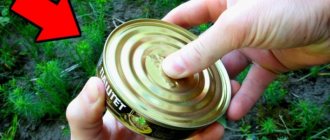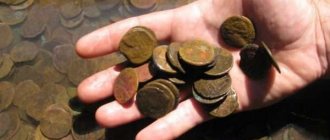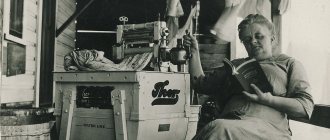Share on social media networks:
People often have the most unusual questions when searching online. And when fantasy is already approaching its peak, you can even think about what tin cans are made of. Funny? — Not at all, because everyone likes to eat some kind of canned food: fish in its own juice, in tomato sauce, in spices, all kinds of pates, salmon caviar, pollock. Yes, there are many other things on the shelves today that can be eaten only by opening a jar, or used as a basis for hot and cold dishes, salads, rolls, tartlets. Before considering the question of what metal cans are made of, let's look back into the past.
Tin Cans
Cans for canning are made of tinplate (thin sheet iron coated on both sides with an even thinner layer of tin). The surface of iron sheets is covered with tin to prevent oxidation of iron by atmospheric oxygen. The iron sheet has a thickness of 0.24-0.35 mm. Thinner tin is used to make small cans, thicker tin is used for large ones with a capacity of 3 liters or more. However, the canning industry has now begun to produce cans from thinner tin, 0.20 mm thick. cans are convenient and much easier to open. In addition, iron consumption is reduced by almost 25%.
The purest tin is used for tinning (coating) iron, without any admixtures of other metals, especially those that are harmful to humans. The layer of tin covering the surface of the iron sheet is needed not only to preserve the iron from rusting, but also to protect canned foods from direct contact with the iron. In the event of such contact, canned products quickly darken; destruction of vitamin C in them, the appearance of a metallic taste, as well as the formation of black spots of iron sulfide on the inner surface of the cans, due to the reaction between iron and sulfur compounds formed during the heat treatment of certain protein products.
Tinning of tin with tin is carried out at metallurgical plants. This process is often carried out by the so-called hot method - immersing clean etched sheets of iron in baths of molten tin. This leaves a thin layer of tin on the sheet of tin. If you cut a plate of tinplate measuring 10x10 cm, then the weight of tin on both sides of the plate will be only 0.4-0.45 g.
But the industry has already introduced a new, progressive method of tinning tin - electrolytic. The new method can dramatically reduce tin consumption. In addition, the tinning speed increases several times.
Tinplate is a good, convenient material for cans . The preserved product retains its quality well in them.
The history of the creation of canned food.
Nowadays, canned food means a wide variety of food products packaged in sealed containers, mainly in tin cans, and subjected to sterilization. It is curious that the French discoverer of the canning method, confectioner Nicolas Appert, used glass containers.
The canning method proposed by Apper initially only complemented the already proven methods of storing food - drying and salting. There were no production facilities yet to produce canned food in the required volumes. For example, to supply the entire Napoleonic army. But nevertheless, Upper's canned food became a great help.
Appera put the products in glass containers, jars with a high neck specially made for him, sealed them hermetically, and then boiled them in salt water to increase the boiling point, with small jars in boiling water for an hour and a half, larger ones for three to four hours at just above 100 degrees. The boiling time was also varied and it was found that there were no “little animals” in tightly sealed and well-heated jars. They were only in those jars that were not tightly closed and not boiled long enough, and, most likely, they got there from the air or were preserved after boiling.
In 1795, the Directory announced a competition to invent a method for long-term storage of food supplies. The winner was promised a substantial cash prize and the title “Benefactor of Humanity.” Apper decided to take part in the competition and did not give up his efforts even when others failed. It was he who in 1810 received the title and reward for his invention - 12 thousand francs, a lot of money, a fortune - from the hands of Napoleon Bonaparte himself.
In 1810, Appert's essay “The Art of Preserving Animal and Vegetable Substance for Several Years” was published. Taking advantage of the emperor’s favor, the enterprising confectioner opened a store in Paris called “Various Food in Bottles and Boxes,” where every customer who entered immediately saw the certificate of honor received from Napoleon. However, Appert’s canned goods did not gain much popularity, even in Napoleonic’s army. The average buyer was scared off by the price - after all, the costs of producing canned food were high.
By the way, we became acquainted with the canned food supplied to the French army in Russia during the Patriotic War of 1812. But Russian soldiers were afraid to use canned food in glass bottles confiscated from French prisoners. It was believed that these were canned frogs.
However, already in 1821, as evidenced by the Russian Archives magazine published at the end of the 19th century, not only soldiers knew about canned food in Russia: “Now they have reached such a degree of perfection that ready-made dinners from Roberts in Paris are sent to India in some tin utensils of a new invention, where they are preserved from damage.” The fact is that, quite reasonably considering glass jars and Upper bottles as unreliable containers, the English inventor Peter Durant proposed using tin cans and already in 1810 he patented his invention. Durant himself was unable to put the invention into production and two years later sold the patent to Brian Donkin and John Hall. The thousand pounds sterling spent on the purchase of the patent paid off quickly - in 1813, the Donkin and Hall factory began producing canned food in cans for the needs of the British army and navy.
Durand cans were made from hand-forged and tin-plated iron sheet. The sheet was also soldered manually, on the inside of the jar, the bottom was soldered to the body, and the lid was soldered only after the contents of a solid consistency were placed in the jar. If any liquid, such as broth, was to be poured into the jar, then the jar was completely soldered, but a small hole was left on the lid through which the liquid was poured, after which the hole was sealed. The lightest jar weighed at least 500 grams, was quite expensive - a skilled craftsman made no more than five jars per hour - and to open such a jar required a hammer, chisel, dexterity and considerable physical strength.
There were known cases of death from starvation of sailors who found themselves after a shipwreck on a desert island, who had a supply of canned food, but did not have anything that could be used to open cans. During the Crimean War, English soldiers broke many bayonets when they tried to open canned food, which forced the command to issue a special order prohibiting the use of bayonets for this purpose.
In addition, the solder on the seams of many cans of that time contained lead, which led to the slow poisoning of those who ate canned food. Thus, lead solder was recognized as one of the causes of death of part of the crew of the British Arctic expedition of John Franklin, and in the winter of 1872-1873, seal hunters who were forced to spend the winter there died on Spitsbergen - a study of the remains of the victims, carried out today, showed that with a high probability The hunters were killed by lead poisoning contained in the solder of cans.
After Henry Bessemer patented a method for producing low-carbon steel, it became possible to produce thin tin, which gave greater accuracy in the dimensions of the manufactured cans and made the work of tinsmiths easier. Now opening cans was no longer such a serious problem, and the appearance of can openers of a wide variety of designs in the late 1850s generally minimized it.
The use of thin sheet metal made it possible to avoid welding when fastening the bottoms and covers. Gradually, tin cans acquired a modern look. Moreover, it has become possible to open them both without a can opener and without a knife, chisel or. Using improvised means, that is, with bare hands, opening the jar turned out to be not at all difficult. True, the jar is tall, for example with stew. It’s already difficult to flatten, say with sprats. To do this, you need to push two recesses into the sides of the can at an angle to each other and start, holding the base of the can, if possible, move the bases in relation to each other, one clockwise, the other counterclockwise. Sooner or later, a gap will appear in the place where the supposed connection of the recesses is located. By expanding it, you can ensure that the jar is open. More precisely - torn. Please come to the table...
Lacquered tin cans
Most of the canned food at our enterprises is produced in tinplate cans. However, there are many canned foods for which a tin coating is not enough to preserve the quality (pickled vegetables and fruits containing acetic acid, or various canned foods with tomato sauce, fruit compotes made from sour fruits). Under the influence of the acids that make up these canned foods, tin can dissolve; in some places, areas of iron not coated with tin may appear on the inner surface of the cans. To prevent this from happening, such canned food is made in lacquered tin cans. Tinplate is coated with a special food-grade varnish, which completely eliminates the possibility of the product dissolving metals. Canned food varnishes are not allowed to contain any substances harmful to humans. Varnished cans are suitable for making all types of canned food.
Readers may have a question - if this is so, then why are not all tin cans made of lacquered tin? From the above it is clear that this is simply not necessary. In addition, varnishing, of course, increases the cost of cans and should be done only if truly necessary.
It is worth dwelling on the frequent cases of darkening of the inner surface of unvarnished tin cans with the formation of spots or stripes of various shapes of a bluish-brown color. This phenomenon is observed in canned foods that contain a lot of protein (stew, green peas, canned fish, etc.). When such products are heated during sterilization, sulfur compounds are formed, which immediately react with the tin coating the inside of the jar. The resulting substances form a thin bluish film. It is harmless, insoluble in water and adheres firmly to the tin. Its only drawback is that it somewhat worsens the appearance of the inner surface of the jar (the phenomenon of “marbling”).
In varnished cans, almost no marbling is observed. Therefore, recently, canned meat is often produced in varnished cans.
The sizes of cans are standardized. The standards establish the exact (up to tenths of mm) dimensions of each type of tin can. There are more than 30 types of tin cans. For each type, exact dimensions are determined, a specific number is assigned, and a list of canned foods for which these cans are intended is recommended. The most common are cylindrical jars of various capacities.
Canned fish is often prepared in rectangular, oval and elliptical jars. These jars have a small height and shape, convenient for placing oblong fish in them without damaging them.
Source
What are tin cans made of today?
In the 1850s, the production of low-carbon steel was established. This was useful in the production of cans, as it made it possible to obtain thinner sheets of tin and to mechanize tinning and manufacturing. During this period, they stopped using lead in solder (it was discovered that harmful substances get into the product and with prolonged use this threatens poisoning).
The welding was replaced by a double seam, which carried over to the modern canning vessel. The solder was left only on the outside of the can seam to prevent contact with the food.
This is what cans are made from in modern factories:
- Tin or aluminum sheets are coated with special oil and shallow “cups” are made on a press.
At the same time, blanks for the bottom and lid are cut out.
The cups are stretched, leveled, and cut to the required size of the tin can.
If an image is required on the can, then the surface of the walls is coated with a special compound, dried, the design is stamped and opened with varnish.
All that remains is to solder the bottom, send the container to the canning shop, put the canned food in the jar and close the lid.
Tin cans
Dear friends and visitors to our store www.samogon-plus.ru , pay attention to the section “Tin cans for canning”. This is a convenient, practical and modern packaging for food products. The offered tin containers are manufactured on high-precision equipment from food-grade tin with a thickness of 0.18-0.22 mm in accordance with the requirements of GOST and ISO (international quality standard). The varnish-enamel coating of the can ensures safe preservation of any type of food product.
Making cans - all the wisdom
What metal are tin cans made of? Canning jars make:
- made of thin tinned steel;
- sometimes made of aluminum or other metals.
Why exactly these materials?
- They can be recycled again without losing quality or strength.
- The main difference from other utensils for storing food is that there is no way to reseal the jar, since the metal is cut when the jar is opened.
How is the container constructed?
- A tin can consists of a body, a bottom and a lid.
- To keep the can sealed, the longitudinal seam is automatically sealed with tin solder.
Important! When sealing cans, do not allow alloy particles to get inside the body, since the solder contains a small amount of lead.
The alloy is applied only to the outer surface of the can body. In a sealed case, the edge is folded back to attach the bottom and lid. The bottom and lid are usually the same. They are made from a sheet or roll of tin with the formation of rings on the surface, which are called stiffening rings.
When the finished jar is subjected to sterilization, the pressure in it increases, and the stiffening rings act as springs. They allow the can to expand without damage. After the jar has cooled, the lid and bottom return to their normal position.
Important! Currently, there are many canned foods, especially fish, that are produced in one-piece cans. They do not need to be sealed, you just need to roll the lid on top. Typically, low cans are made this way. Sometimes tin cans are equipped with special keys or tabs for easy opening.
The choice of materials for conservation and an alternative to the “classics”
The answer to the question “ what are tin cans made of ” follows from their purpose. In the foreground are their commercial feasibility, the safety of stored products and the preservation of their qualities, ease of opening, and the possibility of recycling the can after use. All these requirements include the low cost of tin and tin, the characteristics of the chemical reactions of these materials (minimal interaction with products), the speed of container production, light weight, acceptable strength and the tightness of a classic tin can.
Today, alternative materials for making cans are emerging. 17-18% of the total quantity is already manufactured with slight modification. Before tinning, the surface of the iron is coated not with tin, but with a special composition of chromium oxide and an organic layer. This ensures better safety of the products and the containers themselves (chrome is more resistant to scratches than tin), but makes production more expensive - the alloy itself is cheaper, but it is difficult to solder. To make the jar not only safe, but also sufficiently strong and airtight, more complex and expensive equipment is required.
For easier opening, the lid of a modern jar is perforated along the edge under a circular seam and has a key eyelet. It is enough to pull it to get to the contents. Such a jar is not only more convenient, but also safer, since when opened, there are no sharp, torn edges left in it or the lid. A tin can made of sheet metal or aluminum is recyclable and dissolves in the environment within a couple of decades with minimal harm to nature.
Lacquered tin cans
Most of the canned food at our enterprises is produced in tinplate cans. However, there are many canned foods for which a tin coating is not enough to preserve the quality (pickled vegetables and fruits containing acetic acid, or various canned foods with tomato sauce, fruit compotes made from sour fruits). Under the influence of the acids that make up these canned foods, tin can dissolve; in some places, areas of iron not coated with tin may appear on the inner surface of the cans. To prevent this from happening, such canned food is made in lacquered tin cans. Tinplate is coated with a special food-grade varnish, which completely eliminates the possibility of the product dissolving metals. Canned food varnishes are not allowed to contain any substances harmful to humans. Varnished cans are suitable for making all types of canned food.
Readers may have a question - if this is so, then why are not all tin cans made of lacquered tin? From the above it is clear that this is simply not necessary. In addition, varnishing, of course, increases the cost of cans and should be done only if truly necessary.
It is worth dwelling on the frequent cases of darkening of the inner surface of unvarnished tin cans with the formation of spots or stripes of various shapes of a bluish-brown color. This phenomenon is observed in canned foods that contain a lot of protein (stew, green peas, canned fish, etc.). When such products are heated during sterilization, sulfur compounds are formed, which immediately react with the tin coating the inside of the jar. The resulting substances form a thin bluish film. It is harmless, insoluble in water and adheres firmly to the tin. Its only drawback is that it somewhat worsens the appearance of the inner surface of the jar (the phenomenon of “marbling”).
History of the tin can
The very first canned food was discovered during excavations of the tomb of Pharaoh Tutankhamun in Egypt. These were ducks roasted and embalmed with olive oil in clay bowls. The most interesting thing is that after lying in the depths of the earth for so many years, they were suitable for food.
French chef Nicolas François Appert spent 10 years proving the fact that hermetically sealed and heat-treated foods can be stored for a long time. His invention was put into production for the warring French army. And in 1809 he was awarded the title of “Benefactor of Humanity” and a prize. Later he opened his own business - a store called “Various food in bottles and boxes.” There was a canned food factory attached to the store.
Scientific confirmation of Appert's ideas came only 60 years later. Peter Dukan brought the idea to fruition and patented the tin cans that are familiar to all of us. They were, of course, very different from modern ones. They were made by hand and had a very inconvenient lid. To open it, you had to use a hammer and chisel.
Since 1819, America began to produce canned food. It was here that canned food acquired the form that is familiar to us today, and in 1860, again, a can opener was invented in America. In Russia, canned food began to be produced in 1870.
As you can see, over the course of several centuries there were several materials from which tin cans were made. Let us now understand what we are dealing with today.
Second life of tin cans
Tin, aluminum, in principle, the composition is not important, that is, what the tin can that appears in your home is made of. The main thing is that you can make a lot of useful things out of it with your own hands. Sometimes their second life turns out to be much brighter, more beautiful and more useful than the real one.
Organizer for office supplies
Jars were invented to store something in them; it could very well be small things from your desktop. There are a lot of options for decorating a tin can:
- they can be painted;
- cover with thread;
- decorate with pebbles and shells;
- lay out a mosaic of pieces of glass on them.
Important! Use your imagination and your desk will be decorated with an original organizer that will be a nice place to store pens, pencils, buttons, etc.
Garden lamps
If you are planning a celebration at your dacha, then original lamps placed in the yard or among the trees will add a very special atmosphere to your garden.
Flower pots
From tin cans you can come up with a wide variety of flower pots of different sizes, colors and shapes. They can be decorated with available materials, such as clothespins. It will turn out beautiful and original.
Important! It will look very nice if you cover the jar with garden rope, you can even come up with tags with the names of the plants.
Cutlery stand
A few cans and a piece of wood will make a beautiful cutlery stand. You can use the same principle to make a stand for bottles.
Drum
Even a child can handle this. Just stretch the balloon onto the can, secure it with a rubber band - the drum is ready!
Wall decor with jar lids
Quite a labor-intensive job, but the result lives up to expectations. You can decorate the entire wall or just part of it. Lids from cans of various sizes are adjusted to each other, and a metal wall is obtained.
Snowman
It’s easy to make: you need to take three cans of different sizes, which are painted to look like a snowman and decorated with buttons. The snowman can be given a hat, scarf, hands and twigs. Children will surely like this craft and will decorate your yard not only in winter.
Who invented the first can - where and when
In 1810, Englishman Peter Durand patented a new container for hermetically storing food - a tin can.
But the English inventor did not start producing cans. He sold the rights to two enterprising compatriots - Brian Donkin and John Hall. In 1813, the newly minted patent holders built a canning factory and began selling canned goods. Do you know what tin cans from that period were made of?
Made from thin tinplate - sheet iron coated with tin (to protect against oxidation), hand forged to a thickness of 0.1 mm. The technology was labor-intensive at all stages: the sheet was wrapped in a mold, the ends were manually sealed on the inside, then the bottom was soldered to the can. After adding food - meat, fish, cereals, stews, vegetables or fruits - the lids were soldered. For liquid canned food, a special lid was made under the jar with a small hole for filling.
Cool remodels: what can be done from tin cans
Do you throw away cans? But in vain: you can use them to make many useful and beautiful things for your home and garden. To work, you will need a minimum set of tools and materials, but inspiring ideas will not matter. Choose!
Creative ideas for using tin cans
Flowerpots and flower pots
Unpretentious succulents do not need a large volume of soil, so they will grow perfectly in such cute pots.
Stylish pots for succulents
If there are larger jars, feel free to plant other plants with a small root system in them. But in both cases, do not forget about the drainage holes so as not to turn the jar into a swamp.
They feel good in these pots
Just look how you can decorate a boring fence or turn a blank shed wall into a vertical flower garden!
You can make a delightful planter in minutes: cut the jar to the desired length, attach clothespins - you're done! Or glue (with a glue gun) simple pencils, tie them with twine made of natural fibers - why not a designer thing?
Not only is it difficult to find such pots in a store, but you will also save a lot of money: products made from natural wood cost a lot.
Candlesticks and lamps
A favorite topic in the handicraft world... What they are made from! But from tin cans they turn out to be simply unrealistically impressive.
And don’t think that you can’t do this: a good stationery knife, a hammer, nails (or a drill with a thin drill), a little patience - and an exquisite piece of furniture will decorate your dacha.
Amphora instead of a jar
Since ancient times, humanity has been concerned about preserving food and extending its shelf life, so that food is always at hand, and a caught fish or a bird successfully caught in a snare does not become unusable after a few days.
At first, nature itself helped - meat and fish were dried or dried, and in cold regions they were frozen, then they learned how to pickle foods and use spices to preserve them. Already in Ancient Egypt, they skillfully used the primitive principles of canning, applying them not only on products, but also on... people. During excavations of Egyptian tombs, they discovered not only bodies embalmed in a special way - mummies, but also clay pots with cooked food, greased for sealing. Interestingly, one of the first products that were tried to extend their shelf life was grape juice or wine. The Roman senator Marcus Porcius Cato the Elder, who lived in the first century BC, greatly respected the dizzying drink made from grapes and tried in every possible way to protect it from spoilage. In his work on agriculture, he shared a recipe for preserving the product, quite similar to modern preservation: “If you want to have grape juice all year round, then pour it into an amphora, tar the cork and lower the amphora into the pool. After 30 days, take it out. The juice will last for a whole year.” Even then it was clear: in order to prevent food spoilage, it was necessary to limit the access of air - and this was scientifically proven many centuries later.
In Egypt they knew how to preserve both food and pharaohs










